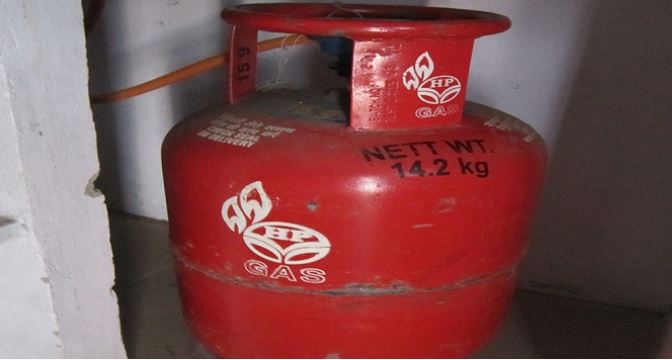
Nearly half of the Liquefied Petroleum Gas, also known as cooking
gas, consumed in the country in the first three months of the year was
imported from India and five other countries.
The country, which is home to the largest natural gas reserves in
Africa and the ninth largest in the world, has continued to suffer
supply shortage over the years.
Data obtained by a Punch correspondent from the National Bureau of
Statistics on Tuesday showed that 47 per cent (146.14 million litres) of
the LPG supply in the country in the first quarter of this year was
imported while 53 per cent (164.71 million litres) was produced locally.
The United States accounted for 46 per cent (67.10 million litres)
of Nigeria’s LPG imports in the period, while India, Trinidad and
Tobago, Algeria, Argentina, and Equatorial Guinea supplied the remaining
one per cent.
Nigeria imported 61.39 million litres of LPG in January, while 33.22 million litres were produced locally.
The country imported 26.60 million litres and 58.15 million litres
in February and March respectively while 55.72 million litres and 75.77
million litres were produced locally in February and March respectively.
It bought 12.95 million litres of LPG from India in January; 12.95
million litres from Algeria in January; 14.64 million litres from
Argentina in February; 21.74 million litres and 4.69 million litres from
Equatorial Guinea in January and February respectively; and 17.59
million litres from Trinidad and Tobago in March.
The US exported 19.29 million litres, 7.26 million litres and 40.55
million litres of LPG to Nigeria in January, February and March
respectively.
According to the Nigerian National Petroleum Corporation, the
country has around 202 trillion cubic feet of proven gas reserves plus
about 600 trillion cubic feet unproven gas reserves.
“Out of 8.5bscfd of natural gas production in Nigeria, only 18
per cent of natural gas produced is being utilised by the domestic
market. A large percentage of the gas produced is used for the export
market. Re-injection is 32 per cent and flared gas stands at seven per
cent,” the Group Executive Director/Chief Operating Officer, Gas
and Power, NNPC, Mr Saidu Mohammed, said at an industry event last
month.
Last month, the Nigerian Association of Liquefied Petroleum Gas
Marketers commended the Federal Government for the removal of Value
Added Tax on locally produced LPG.
The marketers and other industry stakeholders had over the years
complained about the VAT being charged on locally sourced LPG, saying
the tax made the cost of buying the locally produced LPG high, compared
to imported cooking gas.
The President of the association, Mr Nosa Ogieva-Okunbor, said, “The
clamour for VAT removal from domestically produced Liquefied Petroleum
Gas has been of perennial concern to members of our association. The
good news received by our association and the LPG industry is that the
Federal Government has finally signed the approval of VAT removal on LPG
and gazetted same which makes it an official pronouncement.”
He said the increased awareness of LPG usage had seen consumption
in Nigeria grow from 50,000 metric tonnes in 2007 to over 600,000MT in
2018 with more indigenous investments in LPG bottling plants.




















0 comments:
Post a Comment